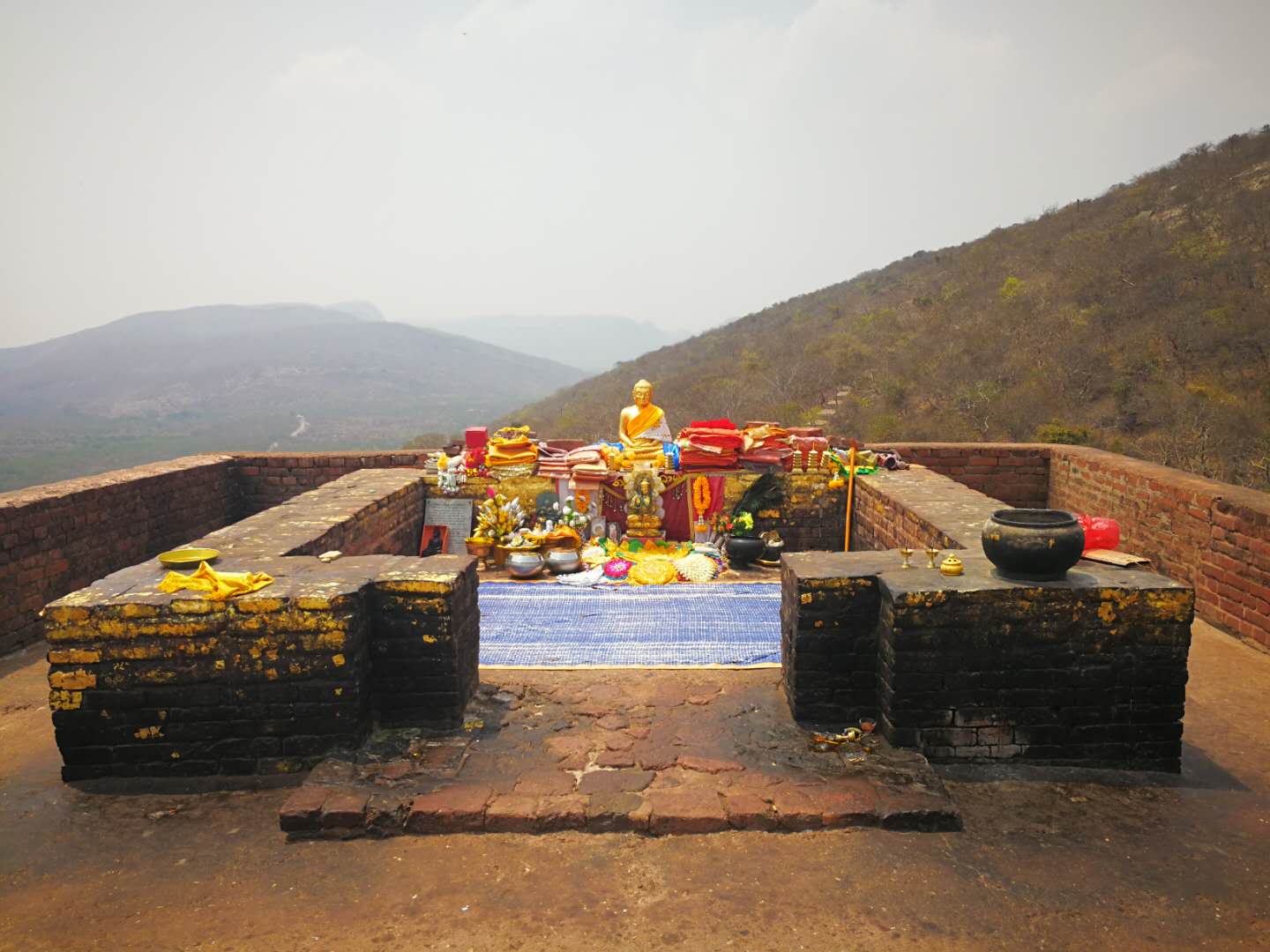The Vulture Peak
The Vulture Peak, also known as the Holy Eagle Peak or Gādhrakūta, was the Buddha’s favorite retreat in Rajagaha (now Rajgir/Rajagrih). It was the scene for many of his discourses. Rajgir is located in Bihar, India. It is so named because it resembles a sitting vulture with its wings folded.
Vulture Peak Mountain is, by tradition, one of several sites frequented by the Buddha and his community of disciples for both training and retreat. Its location is frequently mentioned in Buddhist texts in the Pāli Canon of Theravada Buddhism and in the Mahayana sutras as the place where the Buddha gave certain sermons. Among the sermons are the Heart Sutra, the Lotus Sutra and the Śūraṅgama Samādhi Sūtra as well as many prajnaparamita sutras. It is explicitly mentioned in the Lotus Sutra, chapter 16, as the Buddha’s pure land:
And when the living have become faithful,
Honest and upright and gentle,
And wholeheartedly want to see the Buddha,
Even at the cost of their own lives,
Then, together with the assembly of monks
I appear on Holy Eagle Peak.
…
Such are my divine powers.
Throughout countless eons,
I have always lived on Holy Eagle Peak
And in various other places.
When the living witness the end of an eon,
When everything is consumed in a great fire,
This land of mine remains safe and tranquil,
Always filled with human and heavenly beings.
The several rock shelters around the Gijjhakuta, its fine view across the valley, and its peaceful environment made it the perfect place for meditation. Climbing the steps that lead to the top, the pilgrim passes a large cave. This is the Sukarakhata (the Boar’s Grotto) where the Buddha delivered two discourses, the Discourse to Long Nails and the Sukarakhata Sutta.
It was here too that Sariputta attained enlightenment. The Sukarakhata seems to have been formed by excavating the earth from under the huge rock that forms the grotto’s roof, an impression confirmed by legend. According to the Pali commentaries during the time of Kassapa Buddha a boar rooting around under the rock made a small cavity which was later enlarged when monsoon rains washed more earth away. Later, an ascetic discovered the cave and, deciding it would be a good place to live in, built a wall around it, furnished it with a couch, and ‘made it as clean as a golden bowl polished with sand.’

